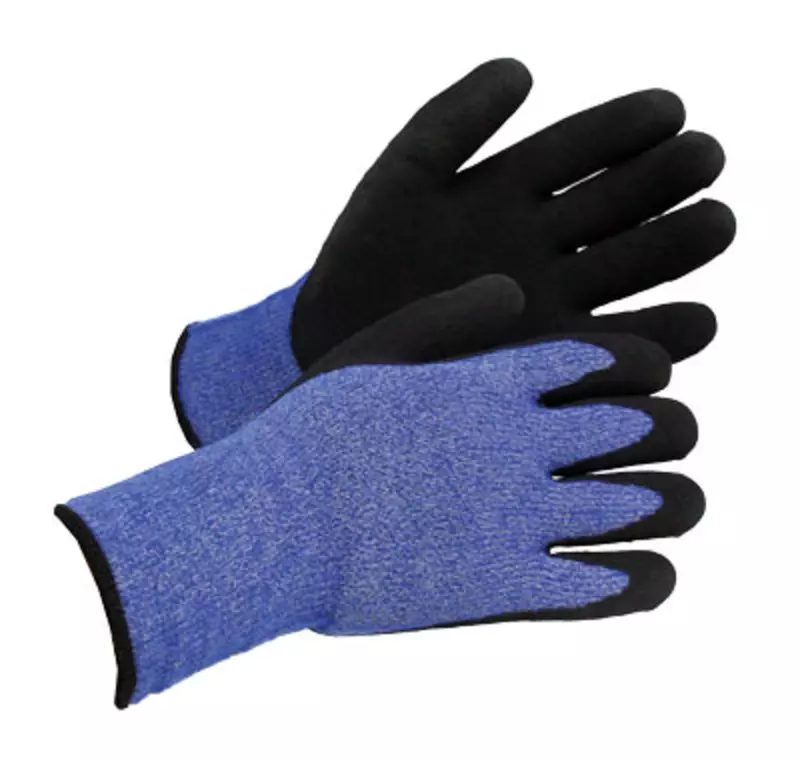
Hand1A Thermo-Cut C Coated Cut Protection Gloves
Hand1A Thermo-Cut C Coated Cut Protection Gloves
4.7 / 5


Hand1A
Thermo-Cut C Coated Cut Protection Gloves, 12 pairs
Thermo-Cut C Coated Cut Protection Gloves, 12 pairs
4.7 / 5
1 125,51 kr
Price per 12 pairs
93,79 kr / pair
Choose size
Free delivery
Product description
The product description has not been specified
The product description has not been specified
The product description has not been specified
Elastic cuffs provide a snug, secure fit that stays comfortably in place, ensuring reliable protection and easy on/off.
A snug knit cuff provides a comfortable, secure fit that keeps debris out and your gloves in place.
Enjoy a flexible, comfortable fit that conforms to your hand, enhancing dexterity for precise tasks.
Full finger coverage provides complete protection for all your digits, ensuring maximum safety.
Versatile design for a wide range of tasks, giving you reliable protection and flexibility for diverse jobs.
The material used on the back of the glove, affecting breathability, flexibility, and comfort during extended wear.
The inner layer or coating that affects comfort, ease of putting on gloves, moisture control, and warmth during wear.
- Machine Washable
- Hand Protection
- Cold Protective
- Cut Resistant
Gloves with the EN 511:2006 rating are tested for protection against convective cold (from air/wind), contact cold (from touching objects), and water penetration. This helps ensure your hands stay warm and protected in various cold conditions, preventing discomfort and cold-related injuries.
Test results
This product was not tested for water penetration resistance. It may not protect your hands from getting wet and could lose its insulating properties in damp or snowy conditions, so it is best for use in dry cold environments.
Provides light thermal insulation when directly handling cold objects. This offers basic protection for short or intermittent contact with cold surfaces, suitable for general tasks in cool conditions rather than prolonged exposure to extreme cold.
This product was not tested for protection against convective cold, which is the cold air in the environment. For this reason, it is not recommended for use in windy or drafty cold conditions where insulation from the air is needed.
Protective gloves with the EN 388:2016 rating are tested for resistance against mechanical risks like abrasion, cuts, tears, punctures, and optional impact. This rating helps you quickly identify and choose gloves that offer the right level of protection for your hands during various tasks.
Test results
Withstands moderate rubbing and friction, offering good protection for tasks involving handling rough materials.
Offers the highest level of protection against tearing, withstanding a strong force before ripping.
Withstands moderate force from sharp objects like heavy-duty splinters or wires.
Offers medium protection against cut risks from handling lightweight metals and plastics.
Offers the highest protection against cuts from a rotating circular blade under this specific test method.
PPE stands for "personal protective equipment." PPE Category 2 refers to equipment that is more complex, and has a higher level of risk. Examples of PPE Category 2 include safety helmets, ear protection, and fall arrest equipment. In Europe, PPE Category 2 must meet certain safety standards set by the European Union, which means that it must be designed and manufactured to protect the user without causing harm. Companies that make or sell PPE must prove that it meets these standards. They also must have a quality management system in place and have to be audited regularly by a notified body.
Free delivery for all Juha Rantanen Oy products
Other products you may like
Similar products you may like
Find +150,000 products from hundreds of brands